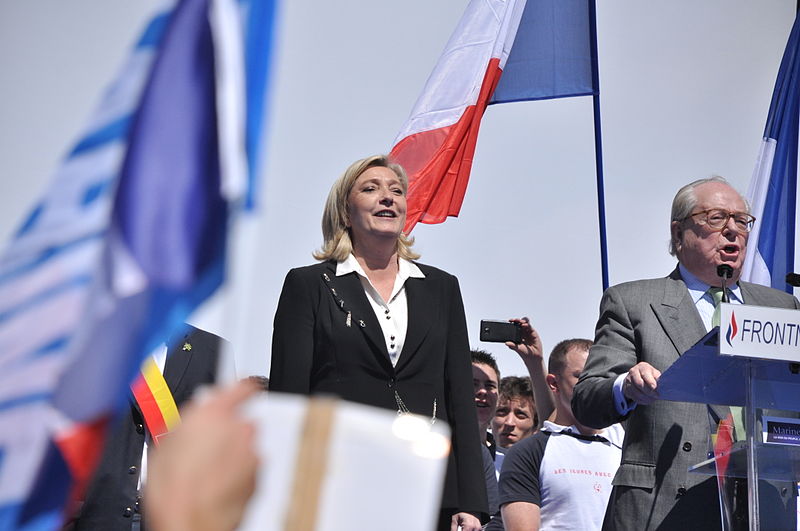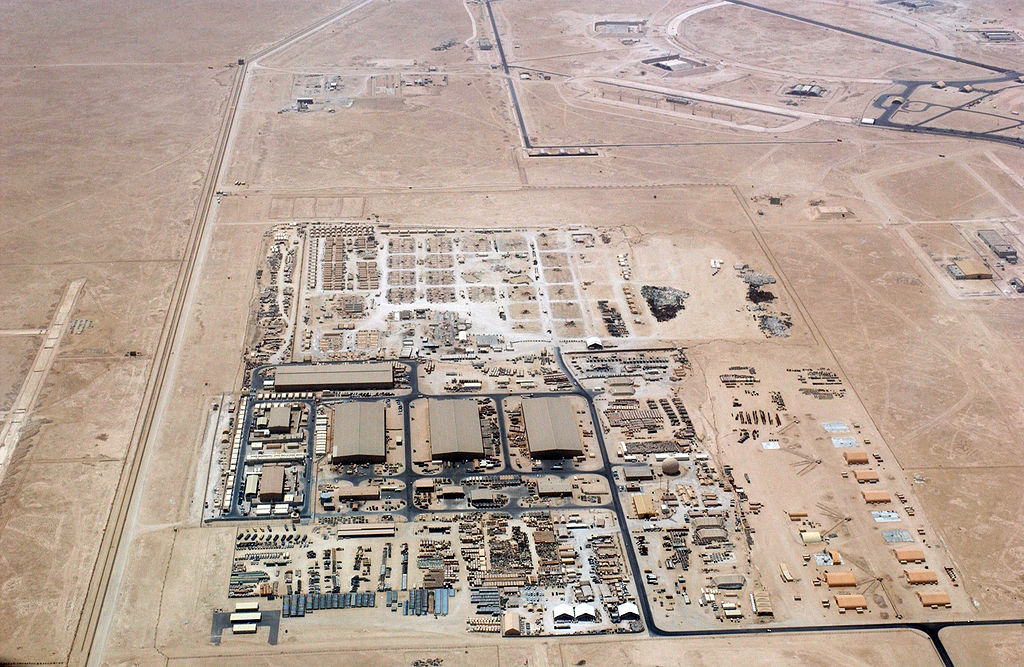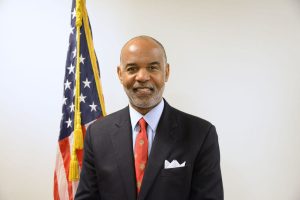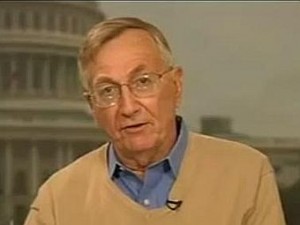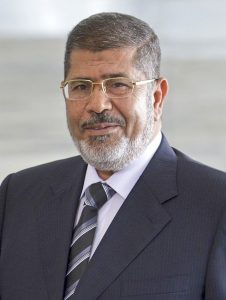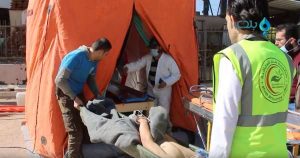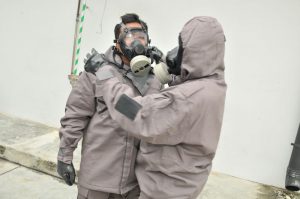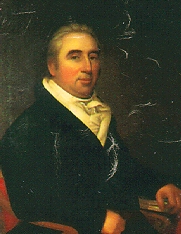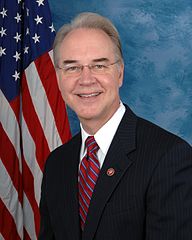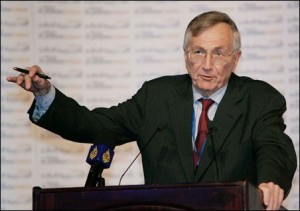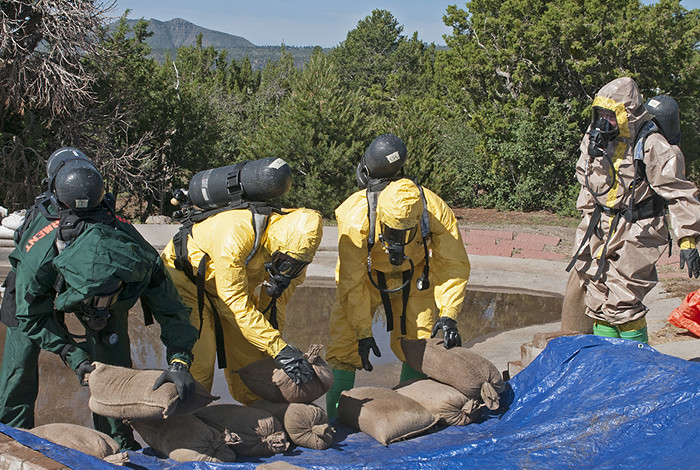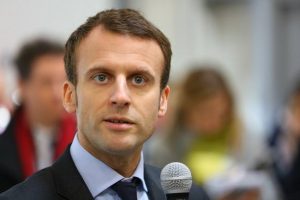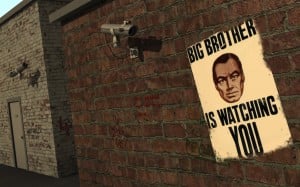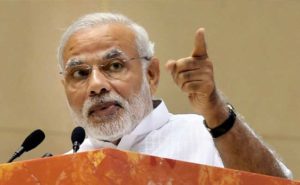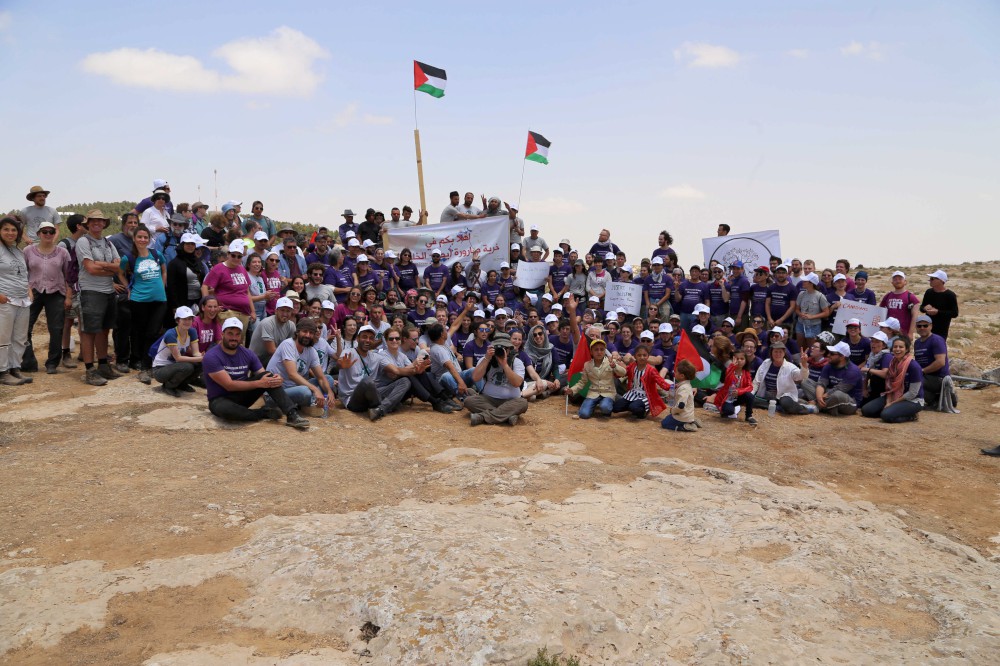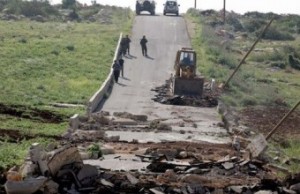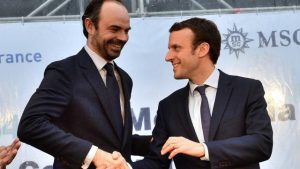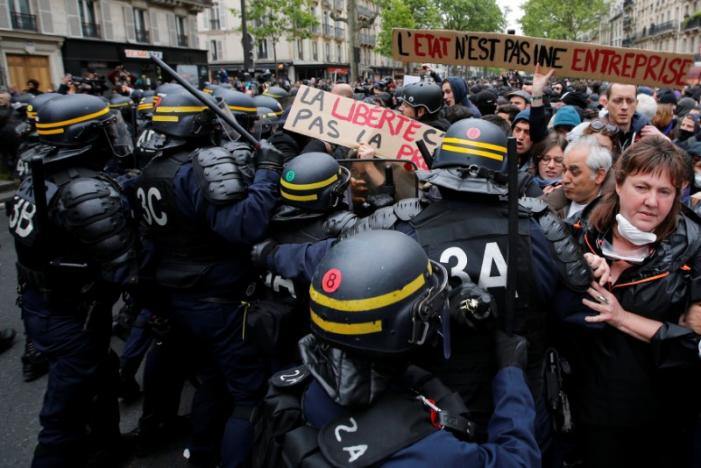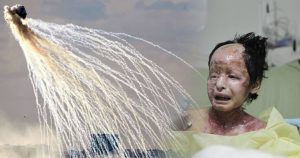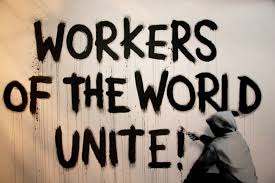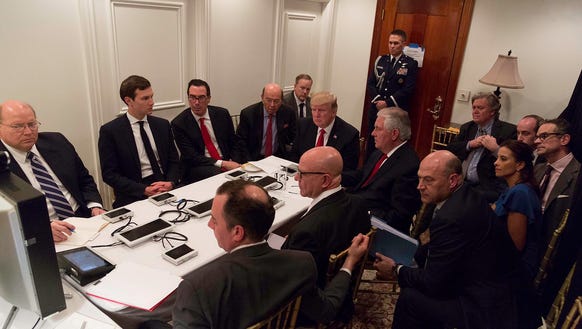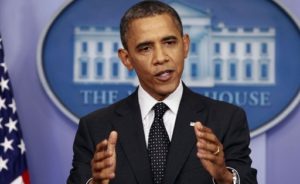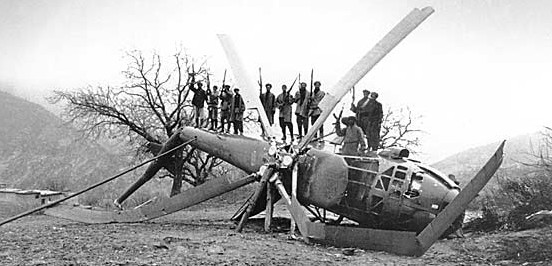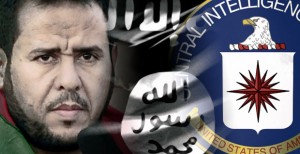Russia-gate, the sprawling investigation into whether Russia meddled in last year’s U.S. election, is often compared to the two big political scandals of the latter half of the Twentieth Century, Watergate and Iran-Contra. Sometimes you even hear that Russia-gate is “bigger than Watergate.”
Yet what is perhaps most remarkable about those two Twentieth Century scandals is how little Official Washington really understands them – and how these earlier scandals significantly contrast, rather than compare, with what is unfolding now.
Although the historical record is still incomplete on Watergate and Iran-Contra, the available evidence indicates that both scandals originated in schemes by Republicans to draw foreign leaders into plots to undermine sitting Democratic presidents and thus pave the way for the elections of Richard Nixon in 1968 and Ronald Reagan in 1980.

The bugged phone from the Watergate office of Democratic Party official Spencer Oliver. Placed on the phone during a May 1972 break-in, the bug was the only device that worked. A second break-in on June 17. 1972, led to the capture of Richard Nixon’s Watergate burglars. (Source: Consortiumnews)
As for Russia-gate, even if you accept that the Russian government hacked into Democratic emails and publicized them via WikiLeaks, there is still no evidence that Donald Trump or his campaign colluded with the Kremlin to do so. By contrast, in the origins of Watergate and Iran-Contra, it appears the Nixon and Reagan campaigns, respectively, were the instigators of schemes to enlist foreign governments in blocking a Vietnam peace deal in 1968 and negotiations to free 52 American hostages in Iran in 1980.
Though Watergate is associated directly with the 1972 campaign – when Nixon’s team of burglars was caught inside the Democratic National Committee offices in the Watergate building – Nixon’s formation of that team, known as the Plumbers, was driven by his fear that he could be exposed for sabotaging President Lyndon Johnson’s Vietnam peace talks in 1968 in order to secure the White House that year.
After Nixon’s narrow victory over Vice President Hubert Humphrey in the 1968 election, FBI Director J. Edgar Hoover informed Nixon that Johnson had a secret file, complete with wiretapped phone calls, detailing the Nixon campaign’s backchannel messages to South Vietnamese officials convincing them to boycott Johnson’s Paris peace talks. Later, Nixon learned that this incriminating file had disappeared from the White House.
So, in 1971, after the leaking of the Pentagon Papers, which recounted the lies that had been used to justify the Vietnam War through 1967, Nixon fretted that the missing file about his peace-talk gambit in 1968 might surface, too, and would destroy him politically. Thus, he organized the Plumbers to find the file, even contemplating fire-bombing the Brookings Institution to enable a search of its safe where some aides thought the missing file might be found.
In other words, Watergate wasn’t simply a break-in at the Democratic National Committee on June 17, 1972, in pursuit of useful political intelligence and Nixon’s ensuing cover-up; the scandal had its origins in a far worse scandal, the derailing of peace talks that could have ended the Vietnam War years earlier and saved the lives of tens of thousands of U.S. soldiers and possibly more than 1 million Vietnamese.
Iran-Contra Parallels
Similarly, the Iran-Contra scandal exploded in 1986 with revelations that President Reagan had authorized secret arms sales to Iran with some of the profits going to fund the Nicaraguan Contra rebels, but the evidence now indicates that the connections between Reagan’s team and Iran’s revolutionary regime traced back to 1980 when emissaries from Reagan’s campaign worked to stymie President Jimmy Carter’s negotiations to free 52 American hostages then held in Iran.
According to multiple witnesses, including former Assistant Secretary of State for Middle Eastern Affairs Nicholas Veliotes, the pre-election contacts led to the opening of a weapons pipeline to Iran (via Israel), after Reagan was sworn in on Jan. 20, 1981, which was the precise moment when Iran finally released the American hostages after 444 days.
Some key players in the 1980 Reagan-Iran contacts reappeared four years later at the start of direct (again secret) U.S. arms shipments to Iran in 1985, which also involved Israeli middlemen. These key players included Iranian CIA operative Cyrus Hashemi, former CIA clandestine services chief Theodore Shackley, Reagan’s campaign chief and then-CIA Director William Casey, and former CIA Director and then-Vice President George H.W. Bush.
In other words, the Iran-Contra weapons shipments of 1985-86 appear to have been an outgrowth of the earlier shipments dating back to 1980 and continuing under Israeli auspices until the supply line was taken over more directly by the Reagan administration in 1985-86.
Thus, both the Watergate scandal in 1972 and the Iran-Contra Affair in 1986 could be viewed as “sequels” to the earlier machinations driven by Republican hunger to seize the enormous powers of the U.S. presidency. However, for decades, Official Washington has been hostile to these underlying explanations of how Watergate and Iran-Contra began.
For instance, The New York Times, the so-called “newspaper of record,” treated the accumulation of evidence regarding Nixon’s 1968 peace-talk gambit as nothing more than a “rumor” until earlier this year when a scholar, John A. Farrell, uncovered cryptic notes taken by Nixon’s aide H.R. Haldeman, which added another piece to the mosaic and left the Times little choice but to pronounce the historical reality finally real.
Grasping the Watergate Narrative
Still, the Times and other major news outlets have failed to factor this belated admission into the larger Watergate narrative. If you understand that Nixon did sabotage President Johnson’s Vietnam War peace talks and that Nixon was aware that Johnson’s file on what LBJ called Nixon’s “treason” had disappeared from the White House, the early “Watergate tapes” from 1971 suddenly make sense.
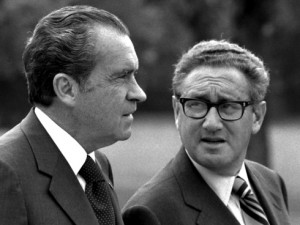
President Richard Nixon with his then-National Security Advisor Henry Kissinger in 1972. (Source: Consortiumnews)
Nixon ordered White House chief of staff H.R. “Bob” Haldeman and National Security Adviser Henry Kissinger to locate the missing file but their search came up empty. Yet, some Nixon aides thought the file might be hidden at the Brookings Institution, a liberal think tank in Washington. So, in his desperate pursuit of the file, Nixon called for a break-in at Brookings, possibly even fire-bombing the building as a cover for his team of burglars to slip in amid the confusion and rifle the safe.
The old explanation that Nixon simply wanted to find some file related to Johnson’s 1968 pre-election Vietnam bombing halt never made sense given the extreme steps that Nixon was prepared to take.
The relevant portions of Nixon’s White House tapes include an entry on June 17, 1971, coincidentally one year to the day before the Watergate burglars were caught. Nixon summoned Haldeman and Kissinger to the Oval Office and pleaded with them again to locate the file.
“Do we have it?” Nixon asked Haldeman. “I’ve asked for it. You said you didn’t have it.”
Haldeman: “We can’t find it.”
Kissinger: “We have nothing here, Mr. President.”
Nixon: “Well, damn-it, I asked for that because I need it.”
Kissinger: “But Bob and I have been trying to put the damn thing together.”
Haldeman: “We have a basic history in constructing our own, but there is a file on it.”
Nixon: “Where?”
Haldeman: “[Presidential aide Tom Charles] Huston swears to God that there’s a file on it and it’s at Brookings.”
Nixon: “Bob? Bob? Now do you remember Huston’s plan [for White House-sponsored break-ins as part of domestic counter-intelligence operations]? Implement it.”
Kissinger: “Now Brookings has no right to have classified documents.”
Nixon: “I want it implemented. Goddamn-it, get in and get those files. Blow the safe and get it.”
Haldeman: “They may very well have cleaned them by now, but this thing, you need to “
Kissinger: “I wouldn’t be surprised if Brookings had the files.”
Haldeman: “My point is Johnson knows that those files are around. He doesn’t know for sure that we don’t have them around.”
But Johnson did know that the file was no longer at the White House because he had ordered his national security adviser, Walt Rostow, to remove it in the final days of Johnson’s presidency.
Forming the Burglars
On June 30, 1971, Nixon again berated Haldeman about the need to break into Brookings and “take it [the file] out.” Nixon suggested using former CIA officer E. Howard Hunt to conduct the Brookings break-in.
“You talk to Hunt,” Nixon told Haldeman. “I want the break-in. Hell, they do that. You’re to break into the place, rifle the files, and bring them in. Just go in and take it. Go in around 8:00 or 9:00 o’clock.”
Haldeman: “Make an inspection of the safe.”
Nixon: “That’s right. You go in to inspect the safe. I mean, clean it up.”
For reasons that remain unclear, it appears that the Brookings break-in never took place (nor did the fire-bombing), but Nixon’s desperation to locate Johnson’s peace-talk file was an important link in the chain of events that led to the creation of Nixon’s burglary unit under Hunt’s supervision. Hunt later oversaw the two Watergate break-ins in May and June of 1972.
While it’s possible that Nixon was still searching for the file about his Vietnam-peace sabotage when the ill-fated Watergate break-ins occurred a year later, it’s generally believed that the burglary was more broadly focused, seeking any information that might have an impact on Nixon’s re-election, either defensively or offensively.
However, if you think back on 1971 when the Vietnam War was tearing the country apart and massive antiwar demonstrations were descending on Washington, Nixon’s desperation to locate the missing file suddenly doesn’t seem quite so crazy. There would have been hell to pay if the public learned that Nixon had kept the war going to gain a political advantage in 1968.
Through 1972 – and the early days of the Watergate scandal – former President Johnson had stayed silent about Nixon’s sabotage of the Paris peace talks. But the ex-President became livid when – after Nixon’s reelection in 1972 – Nixon’s men sought to pressure Johnson into helping them shut down the Watergate investigation, in part, by noting that Johnson, too, had deployed wiretaps against Nixon’s 1968 campaign to obtain evidence about the peace-talk sabotage.

Walt Rostow’s “‘X’ Envelope” (Source: Consortiumnews)
While it’s not clear whether Johnson would have finally spoken out, that threat to Nixon ended two days after Nixon’s second inaugural when on Jan. 22, 1973, Johnson died of a heart attack. However, unbeknownst to Nixon, Johnson had left the missing file, called “The X-Envelope,” in the care of Rostow, who – after Johnson’s death – gave the file to the LBJ presidential library in Austin, Texas, with instructions that it be kept under wraps for at least 50 years. (Rostow’s instructions were overturned in the 1990s, and I found the now largely declassified file at the library in 2012.)
So, with the “The X-Envelope” squirreled away for more than two decades at the LBJ library and with the big newspapers treating the early sketchy reports of Nixon’s peace-talk sabotage as only “rumors,” Watergate remained a scandal limited to the 1972 campaign.
Still, Nixon’s cover-up of his campaign’s role in the Watergate break-in produced enough clear-cut evidence of obstruction of justice and other offenses that Nixon was forced to resign on Aug. 9, 1974.
A Failed Investigation
The 1979-81 hostage confrontation with Iran was not nearly as devastating a crisis as the Vietnam War but America’s humiliation during the 444-day-long ordeal became a focus of the 1980 election, too, with the first anniversary of Iran’s seizure of the U.S. Embassy in Tehran coincidentally falling on Election Day 1980.
President Carter’s failure to gain freedom for the 52 embassy personnel turned what had been a close race into a landslide for Ronald Reagan, with Republicans also gaining control of the U.S. Senate and ousting some of the most influential Democratic senators.
In 1984, Reagan won reelection in another landslide, but two years later ran afoul of the Iran-Contra scandal. Reagan’s secret arms sales to Iran and diversion of profits to the Contras “broke” in November 1986 but focused only on Reagan’s 1985-1986 arms sales and the diversion. Still, the scandal’s crimes included violations of the Arms Export Control Act and the so-called Boland Act’s prohibitions on arming the Contras as well as perjury and obstruction of justice. So there was the prospect of Reagan’s impeachment.
But – from the start of Iran-Contra – there was a strong pushback from Republicans who didn’t want to see another GOP president driven from office. There was also resistance to the scandal from many mainstream media executives who personally liked Reagan and feared a public backlash if the press played an aggressive role similar to Watergate.
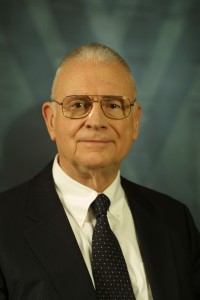
Former Rep. Lee Hamilton, D-Indiana. (Source: Consortiumnews)
And, moderate Democrats, such as Rep. Lee Hamilton of Indiana who co-chaired the congressional investigation, sought to tamp down the Iran-Contra fires and set up firebreaks to prevent the investigation from spreading to related crimes such as the Reagan administration’s protection of Contra cocaine traffickers.
“Ask about the cocaine,” pleaded one protester who was dragged from the Iran-Contra hearing room, as the congressional investigators averted their eyes from such unseemly matters, focusing instead on stilted lectures about the Congress’s constitutional prerogatives.
It was not until 1990-91 that it became clear that secret U.S.-approved arms shipments to Iran did not start in 1985 as the Iran-Contra narrative claimed but traced back to 1981 with Reagan’s approval of arms sales to Iran through Israel.
Reagan’s politically risky move of secretly arming Iran immediately after his inauguration and the hostage release was nearly exposed when one of the Israeli flights strayed into Soviet airspace on July 18, 1981, and crashed or was shot down.
In a PBS interview nearly a decade later, Nicholas Veliotes, Reagan’s assistant secretary of state for the Middle East, said he looked into the incident by talking to top administration officials.
“It was clear to me after my conversations with people on high that indeed we had agreed that the Israelis could transship to Iran some American-origin military equipment,” Veliotes said.
In checking out the Israeli flight, Veliotes came to believe that the Reagan camp’s dealings with Iran dated back to before the 1980 election.
“It seems to have started in earnest in the period probably prior to the election of 1980, as the Israelis had identified who would become the new players in the national security area in the Reagan administration,” Veliotes said. “And I understand some contacts were made at that time.”
However, in 1981, Veliotes said, the State Department issued misleading press guidance to cover the administration’s tracks and the Washington media failed to follow up. Thus, the U.S.-Israeli arms pipeline to Iran stayed secret from the American people until November 1986 when — despite Reagan’s long-running insistence that he would never trade arms with a terrorist state like Iran — the operation was exposed.
When I re-interviewed Veliotes in 2012, he said he couldn’t recall who the “people on high” were who had described the informal clearance of the Israeli shipments of U.S.-manufactured weapons, but he indicated that “the new players” were the young neoconservatives who were working on the Reagan campaign, many of whom later joined the administration as senior political appointees.
Documents that I discovered at the Reagan presidential library revealed that Reagan’s neocons at the State Department, particularly Robert McFarlane and Paul Wolfowitz, initiated a policy review in 1981 to allow Israel to undertake secret military shipments to Iran.
McFarlane and Wolfowitz also maneuvered to put McFarlane in charge of U.S. relations toward Iran and to establish a clandestine U.S. back-channel to the Israeli government outside the knowledge of even senior U.S. government officials.
Another Failed Investigation
In 1991, faced with the accumulating evidence of a prequel to the Iran-Contra scandal, Congress grudgingly agreed to take a look at these so-called “October Surprise” allegations. But Republicans, then led by President George H.W. Bush and his White House team, mounted an aggressive cover-up to “spike” the story.
And, with the congressional inquiry largely in the hands again of Rep. Hamilton, the Democrats timidly folded their tent despite a growing body of evidence that the Reagan team was indeed guilty.
Much of that evidence flowed into the House Task Force in December 1992 when President George H.W. Bush had already been defeated for reelection and the Democrats were looking forward to their renewed control of Washington. So, instead of giving a careful review to the new evidence, the House Task Force ignored, disparaged or buried it.
The late-arriving material included sworn testimony on Dec. 18, 1992, from David Andelman, the biographer of French intelligence chief Alexandre deMarenches, describing how deMarenches had confided that he had helped arrange the Republican-Iranian contacts. Andelman, an ex-New York Times and CBS News correspondent, said that while he was working on deMarenches’s autobiography, the arch-conservative spymaster admitted arranging meetings between Republicans and Iranians about the hostage issue in the summer and fall of 1980, with one meeting held in Paris in October.
Andelman said deMarenches ordered that the secret meetings be kept out of his memoirs because the story could otherwise damage the reputations of his friends, William Casey and George H.W. Bush. Andelman’s testimony corroborated longstanding claims from a variety of international intelligence operatives about a Paris meeting involving Casey and Bush. But the Task Force report brushed this testimony aside, paradoxically terming it “credible” but then claiming it was “insufficiently probative.”
The Task Force’s report argued that Andelman could not “rule out the possibility that deMarenches had told him he was aware of and involved in the Casey meetings because he, deMarenches, could not risk telling his biographer he had no knowledge of these allegations.”
In the last weeks of the investigation, the House investigators also received a letter from former Iranian President Bani-Sadr detailing his behind-the-scenes struggle with Ayatollah Ruhollah Khomeini and his son Ahmad over their secret dealings with the Reagan campaign. But the House investigators dismissed Bani-Sadr’s first-hand account as hearsay and thus also lacking “probative value.”
I later unearthed some of the evidence in unpublished Task Force files. However, in the meantime, Official Washington had dismissed the “October Surprise” and other Iran-Contra-connected scandals, like Contra drug trafficking, as conspiracy theories.
The Russian Report
Ironically, another piece of late-arriving evidence was a January 1993 report from a national security committee of the Russian parliament about the Kremlin’s intelligence data confirming that key Republicans, including George H.W. Bush and William Casey, had met with Iranian officials in Europe regarding the hostages during the 1980 campaign.

Then-Vice President George H.W. Bush with CIA Director William Casey at the White House on Feb. 11, 1981. (Photo from Reagan Library)
Hamilton had requested the Russian assistance before the U.S. election in 1992, but the report was not sent until there were only two weeks left in George H.W. Bush’s presidency.
Lawrence Barcella, who served as the Task Force chief counsel, later told me that so much incriminating evidence arrived late that he asked Hamilton to extend the inquiry for three months but that Hamilton said no (although Hamilton told me that he had no recollection of denying Barcella’s request).
The other fatal flaw of the House investigation was that it left much of the actual investigating up to President George H.W. Bush’s White House counsel’s office and the State Department, although Bush was one of the chief suspects and, in 1991-92, was running for re-election, a campaign that would have been derailed if the 1980 October Surprise allegations were confirmed.
The naivete of this decision was underscored years later when I located a memo at Bush’s presidential library stating that the State Department had informed the White House counsel’s office that Casey had traveled to Madrid in 1980, corroborating a key October Surprise allegation.
The confirmation of Casey’s trip was passed along by State Department legal adviser Edwin D. Williamson to Associate White House Counsel Chester Paul Beach Jr. in early November 1991, just as the October Surprise inquiry was taking shape, according to Beach’s “memorandum for record” dated Nov. 4, 1991.
Williamson said that among the State Department “material potentially relevant to the October Surprise allegations [was] a cable from the Madrid embassy indicating that Bill Casey was in town, for purposes unknown,” Beach noted.
Two days later, on Nov. 6, 1991, Beach’s boss, White House counsel C. Boyden Gray, arranged an inter-agency strategy session and explained the need to contain the congressional investigation into the October Surprise case. The explicit goal was to ensure the scandal would not hurt President Bush’s reelection hopes in 1992.
In 2013, when I interviewed Hamilton about the Beach memo, he lamented that the Madrid information had not been shared with his investigation, saying “you have to rely on people” in authority to comply with information requests.
“We found no evidence to confirm Casey’s trip to Madrid,” Hamilton told me. “We couldn’t show that. The [George H.W. Bush] White House did not notify us that he did make the trip. Should they have passed that on to us? They should have because they knew we were interested in that.”
Asked if knowledge that Casey had traveled to Madrid might have changed the Task Force’s dismissive October Surprise conclusion, Hamilton said yes, because the question of the Madrid trip was key to the task force’s investigation.
Not Moving the Needle
However, the Madrid trip revelation and other post-investigation disclosures failed to move the needle on Official Washington’s disdain for the October Surprise story.

Israeli Prime Minister Yitzhak Shamir shaking hands with President Ronald Reagan’s Defense Secretary Caspar Weinberger in 1982. (U.S. government photo)
The later disclosures included a 1993 interview in Tel Aviv in which former Israeli Prime Minister Yitzhak Shamir said he had read the 1991 book, October Surprise, by Carter’s former National Security Council aide Gary Sick, which made the case for believing that the Republicans had intervened in the 1980 hostage negotiations to disrupt Carter’s reelection.
With the topic raised, one interviewer asked,
“What do you think? Was there an October Surprise?”
“Of course, it was,” Shamir responded without hesitation. “It was.”
And, there were other corroborating statements as well. In 1996, for instance, while former President Carter was meeting with Palestine Liberation Organization leader Arafat in Gaza City, Arafat tried to confess his role in the Republican maneuvering to block Carter’s Iran-hostage negotiations.
“There is something I want to tell you,” Arafat said, addressing Carter in the presence of historian Douglas Brinkley.
“You should know that in 1980 the Republicans approached me with an arms deal [for the PLO] if I could arrange to keep the hostages in Iran until after the [U.S. presidential] election,” Arafat said, according to Brinkley’s article in the fall 1996 issue of Diplomatic Quarterly.
In 2013, after the movie “Argo” appeared regarding an early facet of the Iran-hostage crisis, former Iranian President Bani-Sadr elaborated on his account of Republican overtures to Iran in 1980 and how that secret initiative prevented release of the hostages.
In a Christian Science Monitor commentary, Bani-Sadr wrote,
“Ayatollah Khomeini and Ronald Reagan had organized a clandestine negotiation which prevented the attempts by myself and then-U.S. President Jimmy Carter to free the hostages before the 1980 U.S. presidential election took place. The fact that they were not released tipped the results of the election in favor of Reagan.”
Then, Bani-Sadr added a new detail, that “two of my advisors, Hussein Navab Safavi and Sadr-al-Hefazi, were executed by Khomeini’s regime because they had become aware of this secret relationship between Khomeini, his son Ahmad, … and the Reagan administration.” [For more details on the October Surprise case, see Robert Parry’s Trick or Treason and America’s Stolen Narrative.]
Compare and Contrast
So how do Watergate and Iran-Contra compare and contrast with Russia-gate? One key difference is that in Watergate in 1972-73 and Iran-Contra in 1985-86, you had clear-cut crimes (even if you don’t want to believe the two “prequels” from 1968 and 1980, respectively).
In Watergate, five burglars were caught inside the DNC offices on June 17, 1972, as they sought to plant more bugs on Democratic phones. (An earlier break-in in May had installed two bugs, but one didn’t work.) Nixon then proceeded to mount a cover-up of his 1972 campaign’s role in funding the break-in and other abuses of power.
In Iran-Contra, Reagan secretly authorized weapons sales to Iran, which was then designated a terrorist state, without informing Congress, a violation of the Arms Export Control Act. He also kept Congress in the dark about his belated signing of a related intelligence “finding.” And the creation of slush funds to finance the Nicaraguan Contras represented an evasion of the U.S. Constitution.
There was also the attendant Iran-Contra cover-up mounted both by the Reagan White House and later the George H.W. Bush White House, which culminated in Bush’s Christmas Eve 1992 pardons of six Iran-Contra defendants as special prosecutor Lawrence Walsh was zeroing in on possible indictment of Bush for withholding evidence.
By contrast, Russia-gate has been a “scandal” in search of a specific crime. President Barack Obama’s intelligence chieftains have alleged – without presenting any clear evidence – that the Russian government hacked into the emails of the Democratic National Committee and of Hillary Clinton’s campaign chairman John Podesta and released those emails via WikiLeaks and other Internet sites. (The Russians and WikiLeaks have both denied the accusations.)
The DNC emails revealed that senior Democrats did not maintain their required independence regarding the primaries by seeking to hurt Sen. Bernie Sanders and help Clinton. The Podesta emails pulled back the curtain on Clinton’s paid speeches to Wall Street banks and on pay-to-play features of the Clinton Foundation.
Hacking into personal computers is a crime, but the U.S. government has yet to bring any formal charges against specific individuals supposedly responsible for the hacking of the Democratic emails. There also has been no evidence that Donald Trump’s campaign colluded with Russians in the hacking.
Lacking any precise evidence of this cyber-crime or of a conspiracy between Russia and the Trump campaign, Obama’s Justice Department holdovers and now special prosecutor Robert Mueller have sought to build “process crimes,” around false statements to investigators and possible obstruction of justice.
Railroading Flynn
In the case of retired Lt. Gen. Michael Flynn, Trump’s first national security adviser, acting Attorney General Sally Yates used the archaic Logan Act of 1799 to create a predicate for the FBI to interrogate Flynn about a Dec. 29, 2016 conversation with Russian Ambassador Sergey Kislyak, i.e., after Trump’s election but before the Inauguration.

Green Party leader Jill Stein and retired Lt. General Michael Flynn attending a dinner marking the RT network’s 10-year anniversary in Moscow, December 2015, sitting at the same table as Russian President Vladimir Putin. (Source: Consortiumnews)
The Logan Act, which has never resulted in a prosecution in 218 years, was enacted during the period of the Alien and Sedition Acts to bar private citizens from negotiating on their own with foreign governments. It was never intended to apply to a national security adviser of an elected President, albeit before he was sworn in.
But it became the predicate for the FBI interrogation — and the FBI agents were armed with a transcript of the intercepted Kislyak-Flynn phone call so they could catch Flynn on any gaps in his recollection, which might have been made even hazier because he was on vacation in the Dominican Republic when Kislyak called.
Yates also concocted a bizarre argument that the discrepancies between Flynn’s account of the call and the transcript left him open to Russian blackmail although how that would work – since the Russians surely assumed that Kislyak’s calls would be monitored by U.S. intelligence and thus offered them no leverage with Flynn – was never explained.
Still, Flynn’s failure to recount the phone call precisely and the controversy stirred up around it became the basis for an obstruction of justice investigation of Flynn and led to President Trump’s firing Flynn on Feb. 13.
Trump may have thought that tossing Flynn overboard to the circling sharks would calm down the sharks but the blood in the water only excited them more. According to then-FBI Director James Comey, Trump talked to him one-on-one the next day, Feb. 14, and said,
“‘I hope you can see your way clear to letting this go, to letting Flynn go. He is a good guy. I hope you can let this go.”
Trump’s “hope” and the fact that he later fired Comey have reportedly led special prosecutor Mueller to look at a possible obstruction of justice case against Trump. In other words, Trump could be accused of obstructing what appears to have been a trumped-up case against Flynn.
Of course, there remains the possibility that evidence might surface of Trump or his campaign colluding with the Russians, but such evidence has so far not been presented. Or Mueller’s investigation might turn over some rock and reveal some unrelated crime, possibly financial wrongdoing by Trump or an associate.
(Something similar happened in the Republican investigation of the Sept. 11, 2012 Benghazi attack, a largely fruitless inquiry except that it revealed that Secretary of State Hillary Clinton sent and received official emails over a private server, which Comey decried during last year’s campaign as “extremely careless” but not criminal.)
Curb the Enthusiasm
Another contrast between the earlier scandals (Watergate and Iran-Contra) and Russia-gate is the degree of enthusiasm and excitement that the U.S. mainstream media and congressional Democrats have shown today as opposed to 1972 and 1986.

The Washington Post’s Watergate team, including from left to right, publisher Katharine Graham, Carl Bernstein, Bob Woodward, Howard Simons, and executive editor Ben Bradlee. (Source: Consortiumnews)
Though The Washington Post’s Bob Woodward and Carl Bernstein aggressively pursued the Watergate scandal, there was much less interest elsewhere in major news outlets until Nixon’s criminality became obvious in 1973. Many national Democrats, including DNC Chairman Bob Strauss, were extremely hesitant to pursue the scandal if not outright against it.
Similarly, although Brian Barger and I at The Associated Press were pursuing aspects of Iran-Contra since early 1985, the big newspapers and networks consistently gave the Reagan administration the benefit of the doubt – at least before the scandal finally burst into view in fall 1986 (when a Contra-supply plane crashed inside Nicaragua and a Lebanese newspaper revealed U.S. arms shipments to Iran).
For several months, there was a flurry of attention to the complex Iran-Contra scandal, but the big media still ignored evidence of a White House cover-up and soon lost interest in the difficult work of unraveling the convoluted networks for arms smuggling, money laundering and cocaine trafficking.
Congressional Democrats also shied away from a constitutional confrontation with the popular Reagan and his well-connected Vice President George H.W. Bush.
After moving from AP to Newsweek in early 1987, I learned that the senior executives at Newsweek, then part of The Washington Post Company, didn’t want “another Watergate”; they felt another such scandal was not “good for the country” and wanted Iran-Contra to go away as soon as possible. I was even told not to read the congressional Iran-Contra report when it was published in October 1987 (although I ignored that order and kept trying to keep my own investigation going in defiance of the wishes of the Newsweek brass until those repeated clashes led to my departure in June 1990).
So, perhaps the biggest similarity between Russia-gate and Watergate is that Richard Nixon and Donald Trump were both highly unpopular with the Washington establishment and thus had few influential defenders, while an important contrast with Iran-Contra was that Reagan and Bush were very well liked, especially among news executives such as Washington Post publisher Katharine Graham who, by all accounts, did not care for the uncouth Nixon. Today, the senior executives of The New York Times, The Washington Post and other major news outlets have made no secret of their disdain for the buffoonish Trump and their hostility toward Russian President Vladimir Putin.
In other words, what is driving Russia-gate – for both the mainstream news media and the Democrats – appears to be a political agenda, i.e., the desire to remove Trump from office while also ratcheting up a New Cold War with Russia, a priority for Washington’s neoconservatives and their liberal-interventionist sidekicks.
If this political drama were playing out in some other country, we would be talking about a “soft coup” in which the “oligarchy” or some other “deep state” force was using semi-constitutional means to engineer a disfavored leader’s removal.
Of course, since the ongoing campaign to remove Trump is happening in the United States, it must be presented as a principled pursuit of truth and a righteous application of the rule of law. But the comparisons to Watergate and Iran-Contra are a stretch.
Investigative reporter Robert Parry broke many of the Iran-Contra stories for The Associated Press and Newsweek in the 1980s. You can buy his latest book, America’s Stolen Narrative, either in print here or as an e-book (from Amazon and barnesandnoble.com).
Featured image from Quora


